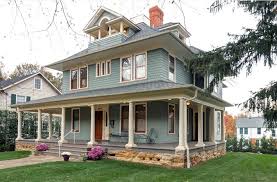Buyers look for older homes for a variety of reasons. The style, charm, and history of an older house can be priceless. Others are looking for a fixer upper to satisfy their handy side. Buying an older home comes with a lot of fun, but it also calls for a sharp eye. These are the things to look out for when you’re considering buying an older home.
Start at the Foundation
A foundation issue is one of the most costly potential problems for buyers. Time will take a toll on even the best built homes. You’ll want to be on the lookout for any kind of unevenness or full-blown cracks in the foundation. A cracked foundation can cause lots of problems including moisture damage, rot, and corrosion. What you are looking for are visible wall cracks, uneven floors, and any doors or windows that jam too easily.
Lead Paint Is Serious
Homes built before the mid-1980s need to be looked at for lead paint. Lead was a common ingredient in both interior and exterior paint. Lead paint was even used in older plumbing systems. According to the EPA, more than half of homes built before 1959 have lead-based paint. That number jumps to 87 percent for homes built before 1940.
Look Closely at Those Bricks
Brick homes and brick chimneys are gorgeous, but look deeper to avoid any unpleasant surprises later. First, acquaint yourself with tuckpointing, a process to repair masonry chimneys and prevent damage between the bricks. Look for evidence of tuckpointing and ask when the process was last done on the chimney. Good tuckpointing will protect the integrity of the chimney and prevent water from entering. Without routine tuckpointing, water can lead to mold, rotting, and staining.
Don’t Overlook the HVAC
Aging HVAC systems pose two threats to your budget: inefficiency and possible future replacement. Look out for clues that the HVAC is working too hard. Air escaping through doors, windows, and air ducts are often the cause. Make sure to ask how old the HVAC system is and when it was last serviced and repaired. An old HVAC system will need to be replaced sooner rather than later, representing a significant investment in your new home. Finally, an aging HVAC system is not as efficient as it could be compared to newer systems, costing you dearly over the long term.
Get a Second Opinion (At Least)
A home inspection is standard practice designed to protect the buyer from any expensive or dangerous surprises. But if an older home has caught your eye, getting a second inspection is advisable. You may want to look into specialized inspections and professional advice such as an inspection by a structural engineer, roof evaluation, termite check, and a call to your HVAC contractor.
Buyers know that an older home offers something unique that can be lacking in newer builds. The uniqueness of an older home comes at the cost of doing your research and asking all of the right questions before signing on the dotted line.
